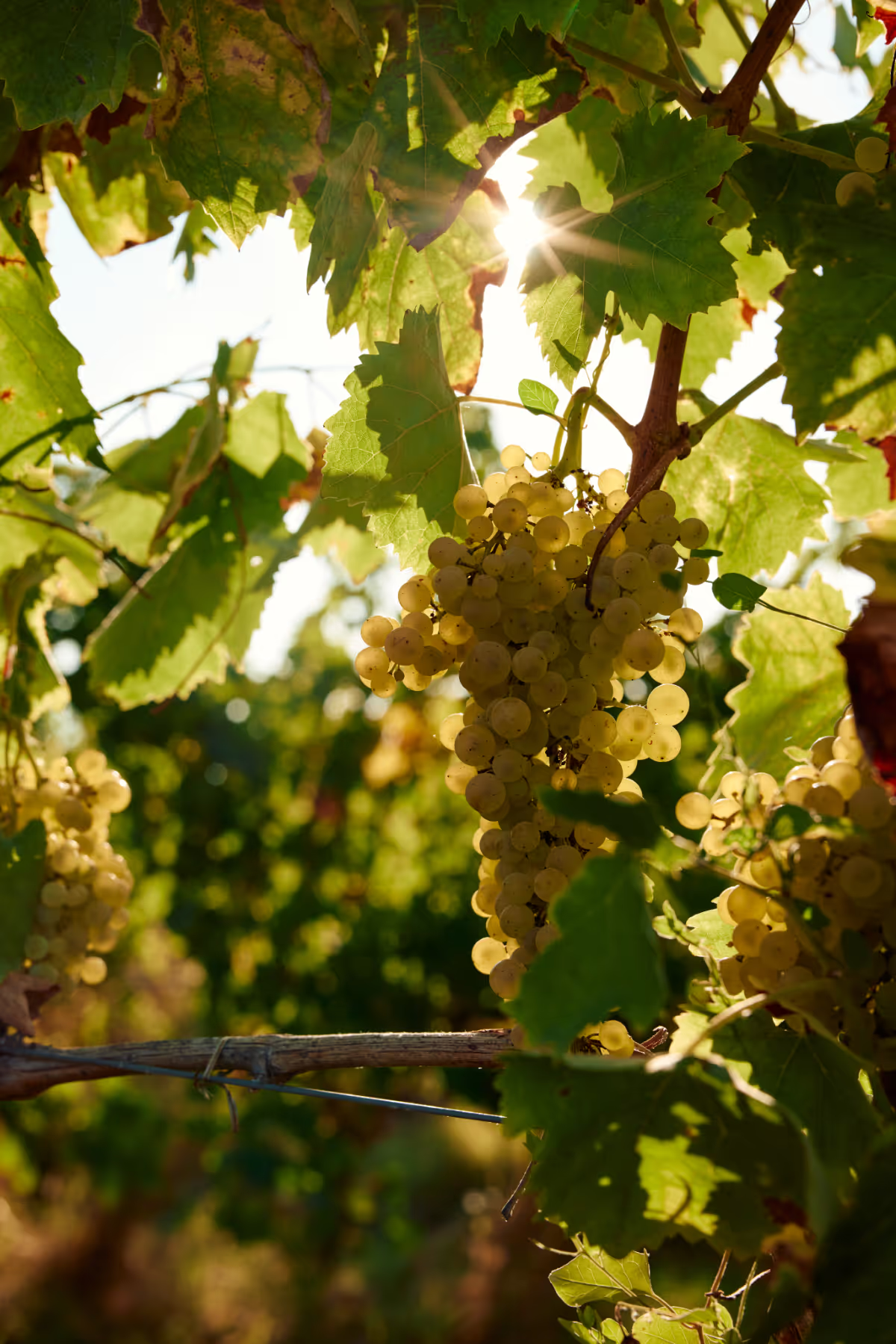OurProducers
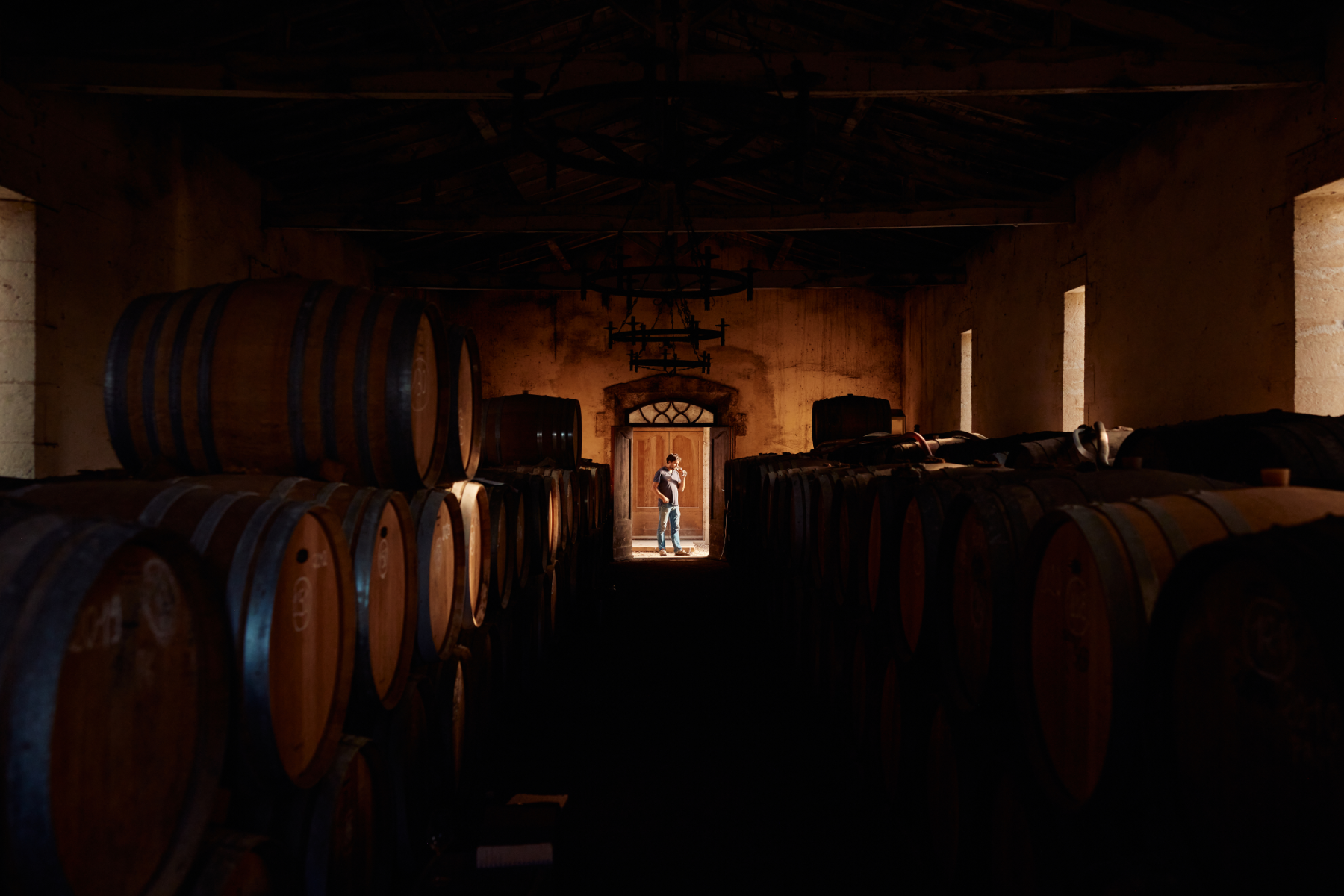
43°57'23.0"N 0°22'36.3"E
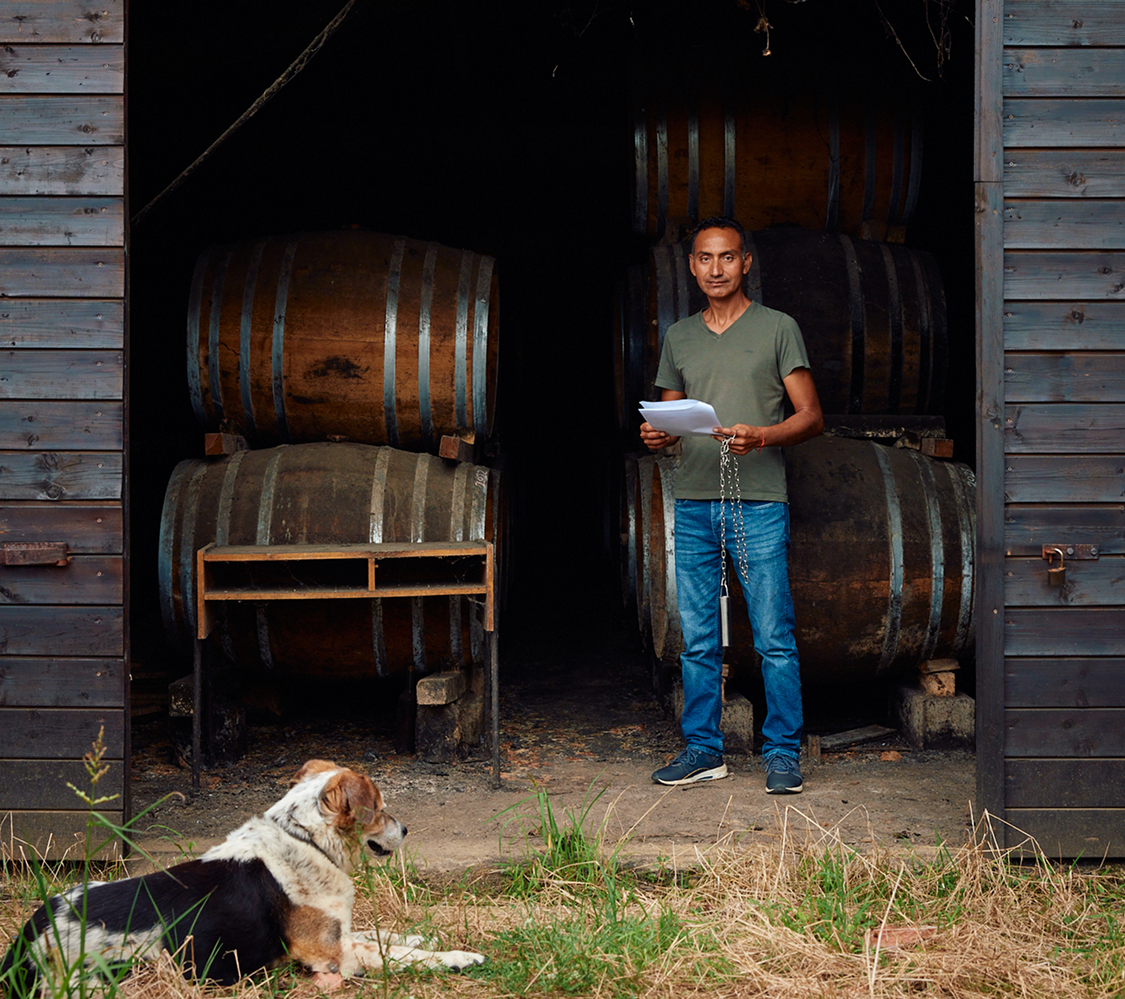
Domaine du Cardinat
Nestled in Sarragachies in the heart of Bas‑Armagnac, Domaine du Cardinat has been family-owned since the late 19th century. Founded by Joseph Lalanne, the estate passed to his son Camille in 1935, who began planting vines and led the domaine for over 70 years, selling mostly by word of mouth.
Today, the modest 5-hectare estate is managed by Camille’s daughter Patricia Singh and her husband Malkeet Singh. Returning home from a corporate career in the late 2000s, Patricia now oversees vineyard operations, while Malkeet manages the cellar. Their focus is on precision and stewardship at every stage of production.
All grapes are estate-grown and distilled on-site using a traditional mobile alembic still. Each single-vintage Armagnac begins aging in new oak before transitioning to older barrels, with detailed attention given to the development of each eau-de-vie. Annual production is extremely limited—only about five barrels—allowing for total control and artisanal care.
Patricia and Malkeet personally manage every step, from harvest to bottling. Domaine du Cardinat’s releases reflect generations of tradition, small-scale craftsmanship, and a deep respect for the terroir of Bas‑Armagnac.
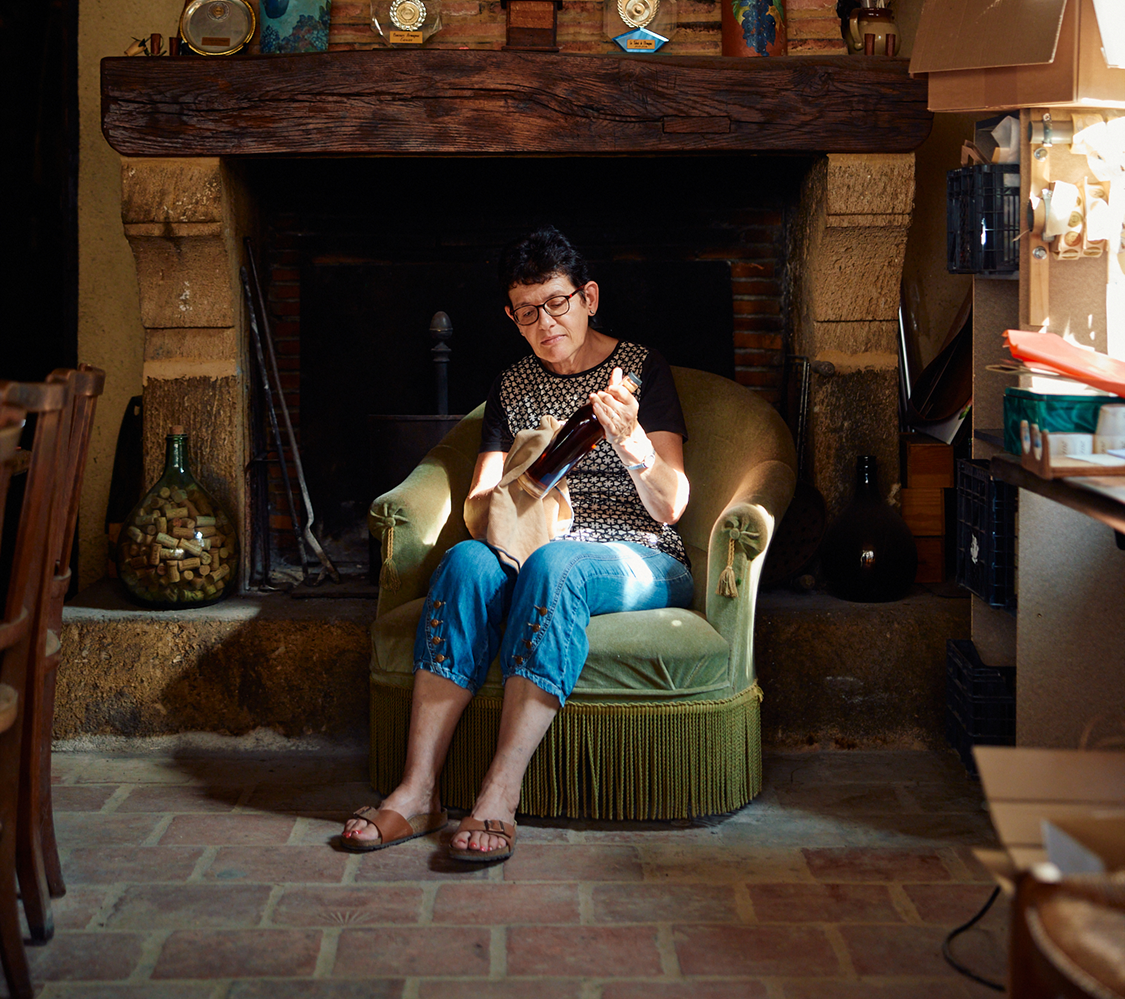
Domaine de Jean-Bon
Located in Toujouse, in the heart of Bas‑Armagnac, Domaine de Jean‑Bon has been a family-run estate since 1905. Today, Béatrice Sourdois Lacourt and her daughter Clémence represent the fourth generation to manage the property and its Armagnac production.
The 50-hectare farm includes 6.5 hectares of primarily Baco vines, the signature grape of Bas‑Armagnac. The remainder is dedicated to traditional Gascon mixed farming—sunflowers, corn, and livestock—preserving its deep agricultural roots. The estate’s name honors a previous generation when three brothers named Jean lived on the property; one, affectionately known as “Jean-Bon” (meaning "Good Jean"), lent his nickname to the domaine.
Distillation is done on-site with a traditional mobile alembic still, and the eaux-de-vie age in 400-liter oak barrels within a rustic, dirt-floored cellar ideal for slow, steady maturation. With annual production limited to just four to eight barrels, every step—from vineyard to bottling—is managed personally by the family.
Domaine de Jean‑Bon remains deeply connected to its heritage, producing Armagnac in small batches with precision, pride, and a strong sense of place in the Gascon countryside.
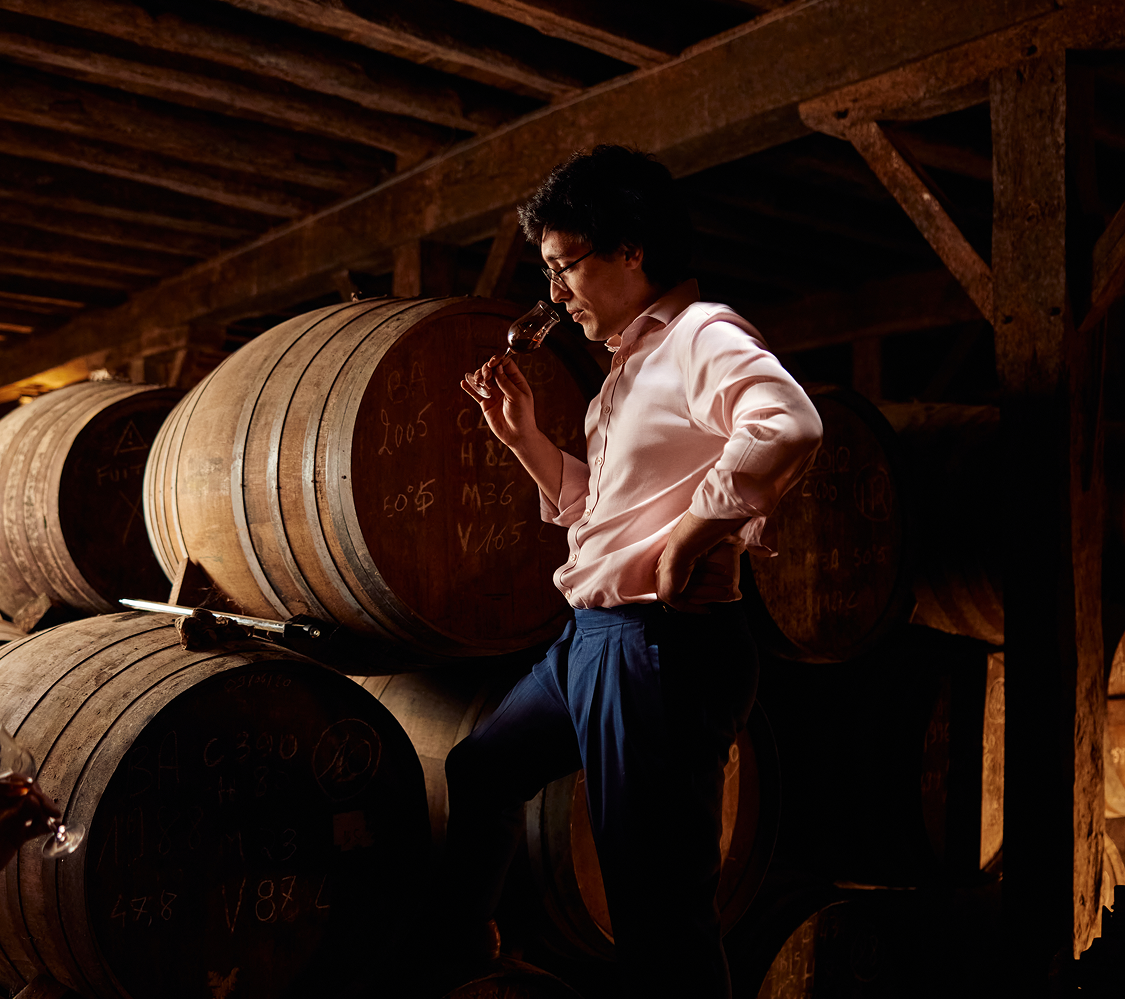
Maison Aurian
Maison Aurian, founded in 1880 by Joseph Dupeyron in the historic Armagnac town of Condom, lies at the heart of the Ténarèze region. Long a hub for Armagnac trade and culture, the house remained in the Aurian family for generations before being acquired in 2018 by Florent and Isabella Soulhol.
The Soulhols have revitalized the house with a focus on craftsmanship and innovation while honoring its deep-rooted heritage. Their approach emphasizes precise cask management, tailoring aging techniques to highlight the unique character of each eau-de-vie. Armagnacs are matured in century-old cellars, with stocks dating back to 1900.
A highlight of Maison Aurian is its “paradise room,” where rare and exceptional Armagnacs rest in glass demijohns—some over 100 years old—preserved after barrel aging has stopped. This living archive embodies the house’s legacy.
In addition to Armagnac, the Soulhols have expanded the house’s range to include over 200 artisanal products, such as liqueurs, vermouths, flavored wines, and natural lemonades. Their commitment to sustainability and community are at the forefront of everything they do.
Maison Aurian stands out as adynamic blend of tradition and innovation—anchored in one of Armagnac’s most iconic towns.
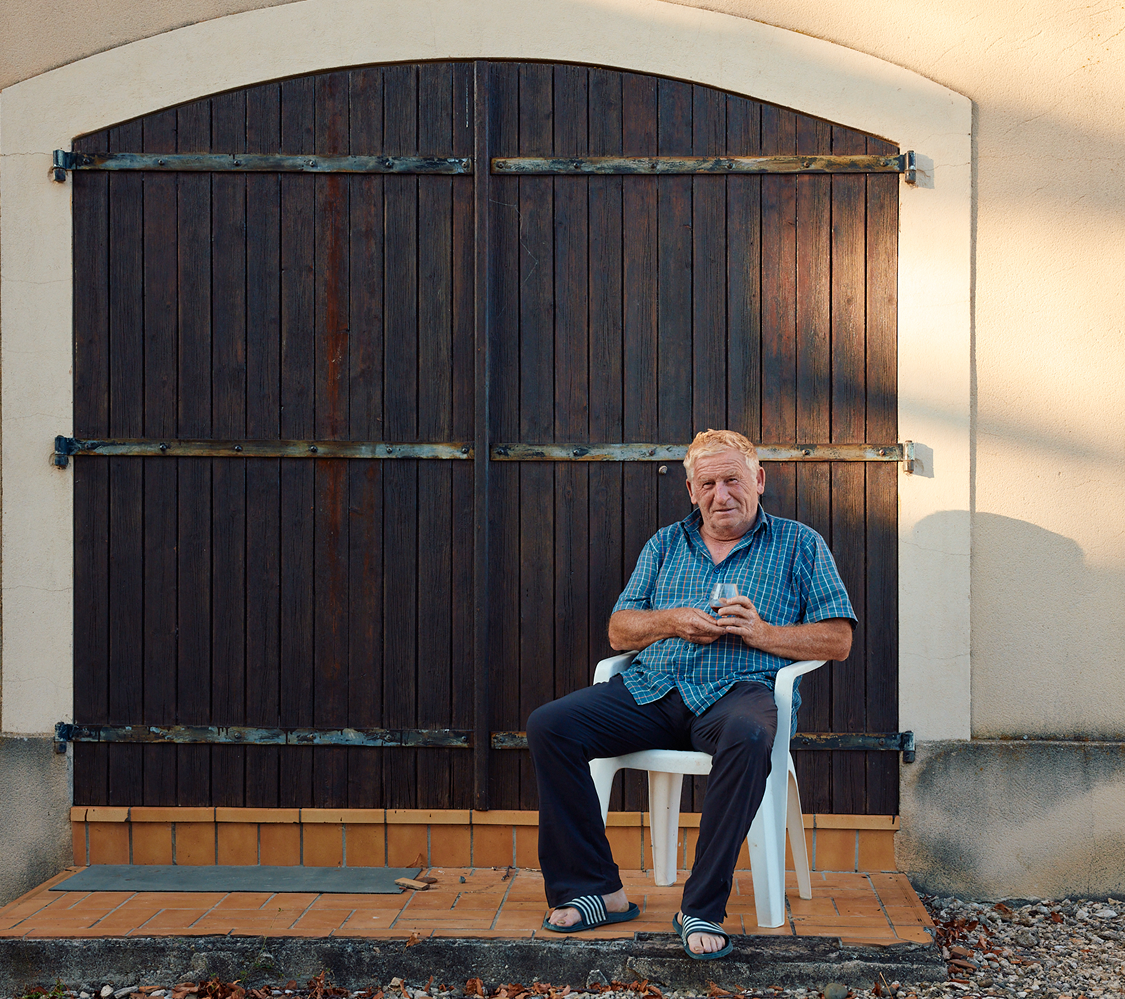
Domaine du Carpoulat
Located in Fources, a medieval bastide village, Domaine du Carpoulat is a sprawling vineyard in the Ténarèze region of Gascony. This region is known for its clay-limestone soils that contribute to the full-bodied character of its Armagnacs.
In the early 1970s, Yves Duflo, a former banana plantation manager from the Caribbean, purchased the property and under his ownership, the estate began producing Armagnac. Duflo's dedication to quality was evident in his decision to retain older Armagnac barrels rather than sell them to eager buyers. This practice allowed the estate to develop a unique and rich inventory of aged spirits over time.
In the mid-1990s, Duflo hired Jean-Jacques Bordes as cellar master. Following Duflo's passing, Bordes continued to manage the estate until his retirement in 2024, when he passed the responsibility to his son, Florient. Florient now resides on the property with his family, demonstrating a deep commitment to the estate's legacy.
Domaine du Carpoulat's Armagnac production is characterized by traditional methods, with a focus on preserving the unique characteristics of the Ténarèze terroir. The Bordes family's extensive knowledge and passion for Armagnac production have deeply influenced the estate's quality and history over the decades.
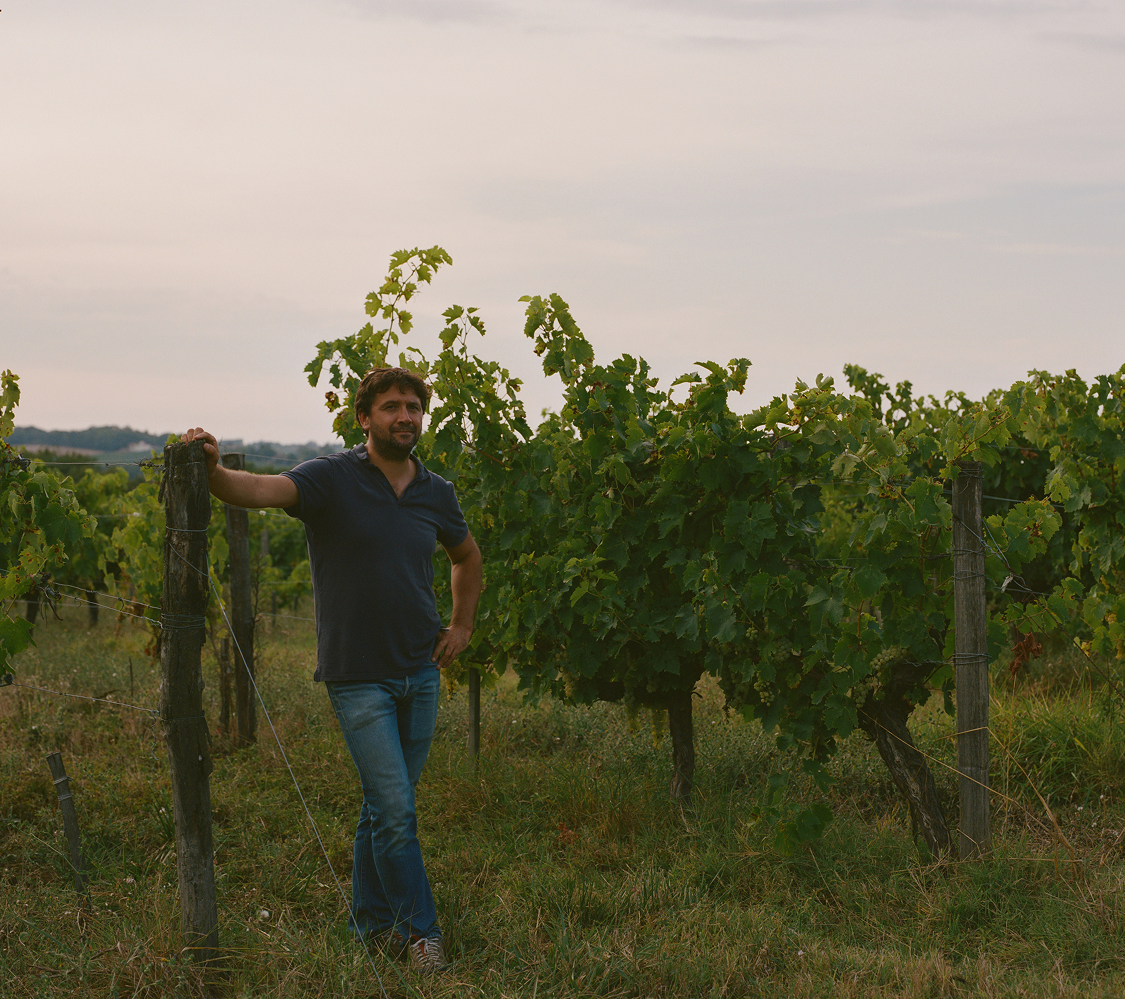
Domaine Séailles
Founded in 1961, Domaine Séailles is a family-owned estate in Mouchan, at the heart of the Ténarèze region of Armagnac. Established by lawyer Jean Labérenne, the domaine originally planted Ugni Blanc and Colombard grapes for Armagnac production. Since 1997, the vineyard has been planted exclusively with Ugni Blanc.
In 1998, Domaine Séailles became one of the region’s pioneers in organic viticulture, earning Ecocert certification. Their farming philosophy emphasizes biodiversity, soil health, and long-term sustainability, and they are also pursuing NOP certification to meet international standards.
Today, the estate is run by Julien Franclet, who began as an oenology intern and succeeded Jean in 2016. Distillation is done using a traditional traveling alambic still brought onsite each harvest. The Armagnac is aged in French oak barrels, many crafted by local cooper Francis Miquel. The estate’s entire barrel stock is less than 200, including a limited quantity of vintages dating back to the 1970s.
Surrounded by historic sites like Château de Laressingle and the Abbaye de Flaran, Domaine Séailles remains deeply rooted in tradition. It continues to produce small quantities of expressive, estate-grown Armagnac that embody the authenticity and character of Ténarèze.
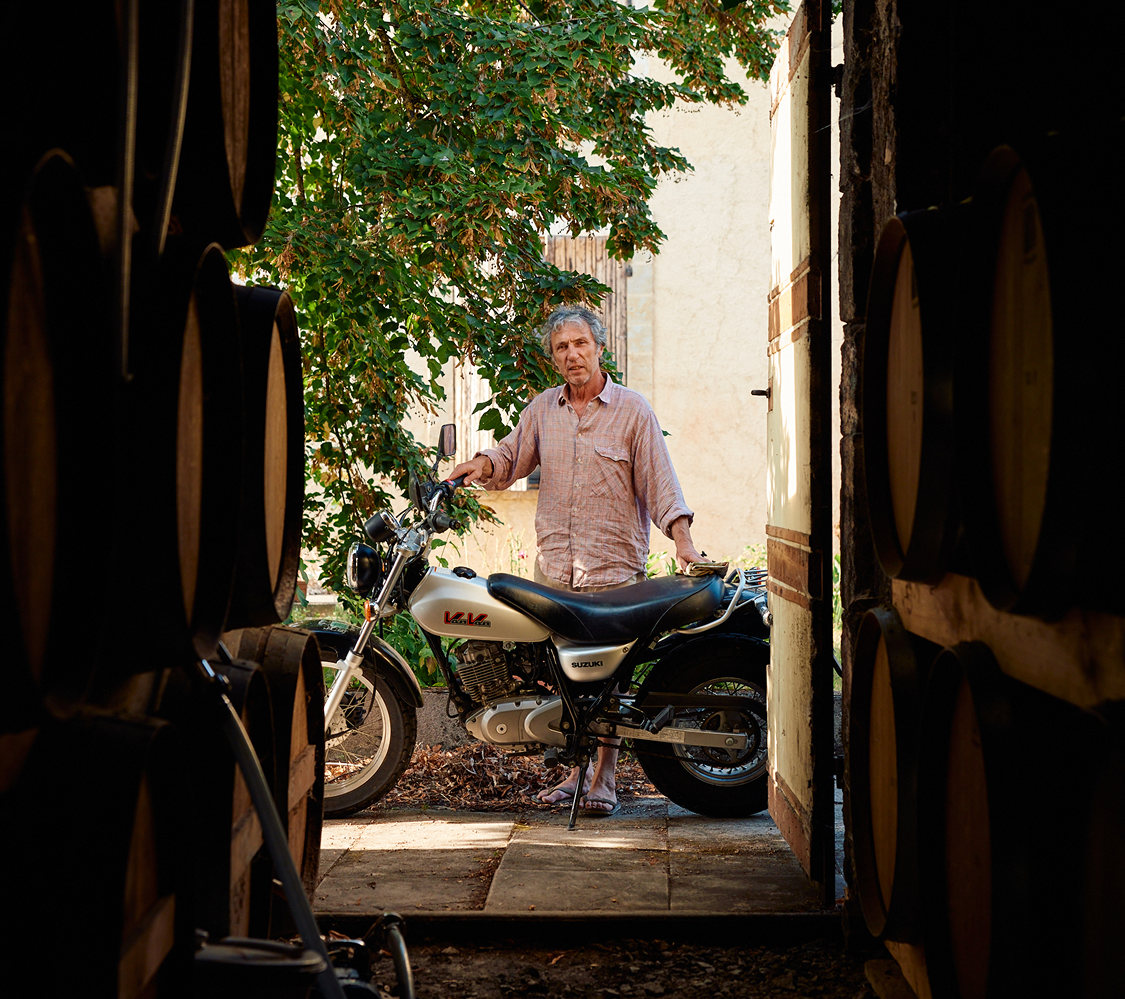
J. Damblat Armagnac
J. Damblat is the historic Armagnac label from a family-run company rooted in the Gascony region. In the early 1980s, Jean-Claude Havion—who had worked for the Damblat Armagnac house in the Gers—had the opportunity to take over the brand.
Jean-Claude worked closely with his sons Samuel and Lionel, who took over the business after his passing. Samuel, now the cellar master, has carried on the family’s deep connection to Armagnac and the traditions of sourcing and aging that define J. Damblat. Today, Samuel and his son continue the legacy with dedication to the heritage of Gascon spirits.
Although J. Damblat does not produce Armagnac themselves, they maintain a significant and historic role as aging and bottling specialists. Their multi-room cellar houses a wide-ranging collection of Armagnac casks sourced from all three subregions: Bas-Armagnac, Ténarèze, and Haut-Armagnac. These barrels span many decades and even include casks from domaines that no longer produce Armagnac, preserving rare pieces of regional history. The cellar is like a living, breathing museum of Armagnac, where tradition, memory, and craftsmanship converge in every cask they steward.
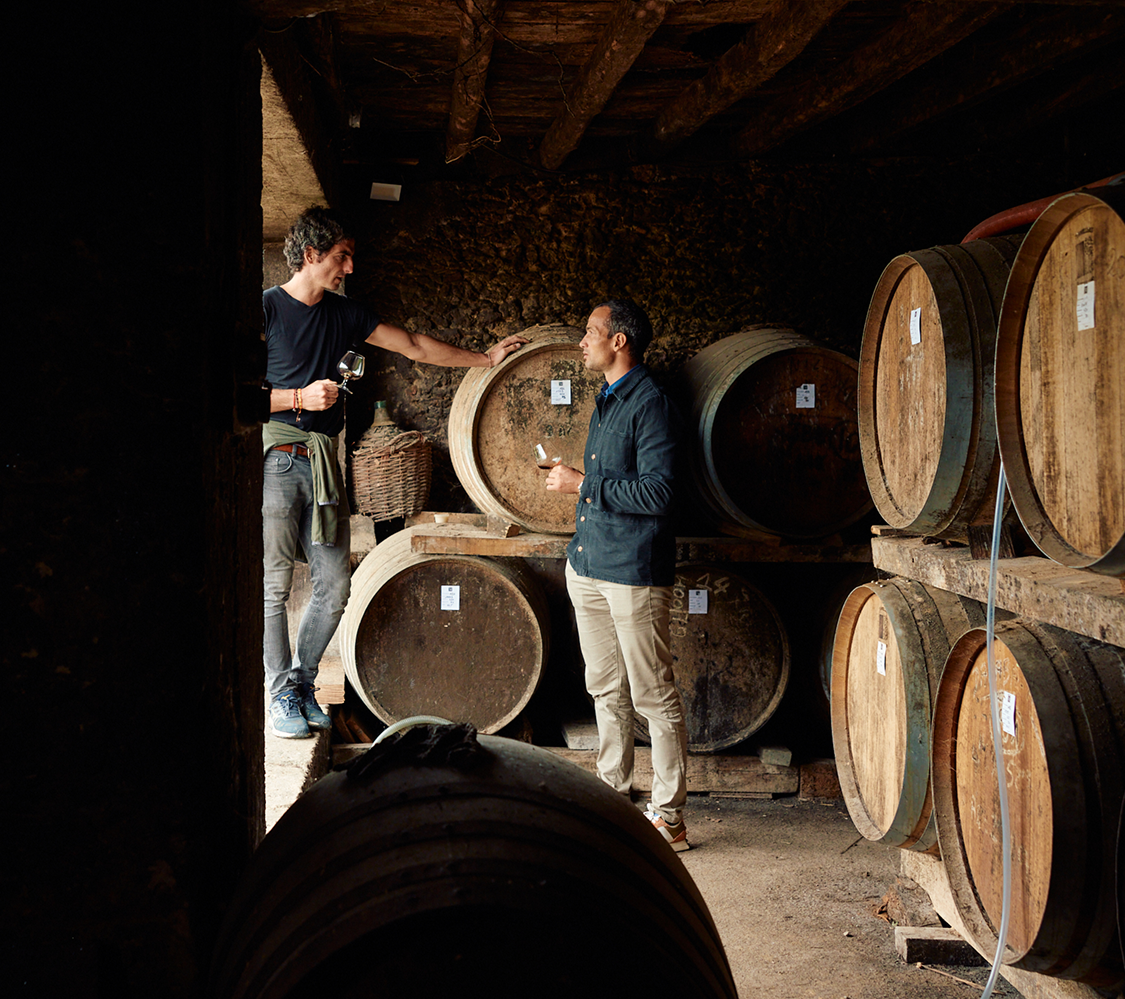
Domaine de Marquestau
Domaine de Marquestau is an18th-century estate located in Hontanx, in the heart of the Bas‑Armagnac region. In 2013, four close friends—viticulturist Jean‑Michel Lamothe, rugby player Julien Tastet, bullfighter Thomas Dufau, and commercial director Sébastien Sarrade—revived the historic estate, which had previously been run by producer Martial Darraba.
Today, the 13-hectare property includes 8 hectares of Baco for Armagnac and 5 for wine varieties. Distillation is done on-site with a traditional traveling alembic still, using only estate-grown grapes to maintain complete control over quality. Armagnac is aged exclusively in high-toast new oak barrels, a rarity to find in Armagnac.
Three distinct cellars, each with different humidity and microclimates, provide varied aging conditions that add character and depth. With a limited annual production of just 15–20 barrels, the estate maintains a highly artisanal, hands-on approach.
Blending heritage with a modern aesthetic, Domaine de Marquestau feels more like a Napa winery than a traditional Gascon farm. It also houses Le Table, a seasonal restaurant and event space in a restored stone barn, run by chef Sylvain Mauran, offering refined, locally sourced cuisine.
The estate stands out for its commitment to estate-grown fruit, traditional methods, and its growing role in Bas‑Armagnac’s contemporary food and wine scene.

Ferme de Bacoge
Located in Hontanx in the heart of Bas‑Armagnac, Ferme de Bacoge is a historic farm estate dating back to around 1760. For much of the 20th century, it was managed by André Labarbe. Christian Bergerot worked closely alongside André for many years, learning vineyard management and cellar operations firsthand, before taking over the property, where he still lives today, in the early 1990s.
Traditionally a mixed-use farm, Bacoge combined viticulture, cereal farming, and duck breeding for foie gras. Though foie gras production was once a major activity on the estate, it was discontinued in recent years to allow full attention to be focused on Armagnac production and agriculture
The estate cultivates its own grapes, primarily Baco, and distills on-site using a traditional traveling alembic still. Ferme de Bacoge uses three small cellars for aging, each with its own humidity and temperature profile, allowing for variation in maturation. All vintages are aged exclusively in a single new toasted oak barrel, a trait that is not common in Armagnac. Ferme de Bacoge remains a small-scale, traditional Armagnac farm that combines hands-on craftsmanship and strong rural heritage.

Domaine du Cardinat
Nestled in Sarragachies in the heart of Bas‑Armagnac, Domaine du Cardinat has been family-owned since the late 19th century. Founded by Joseph Lalanne, the estate passed to his son Camille in 1935, who began planting vines and led the domaine for over 70 years, selling mostly by word of mouth.
Today, the modest 5-hectare estate is managed by Camille’s daughter Patricia Singh and her husband Malkeet Singh. Returning home from a corporate career in the late 2000s, Patricia now oversees vineyard operations, while Malkeet manages the cellar. Their focus is on precision and stewardship at every stage of production.
All grapes are estate-grown and distilled on-site using a traditional mobile alembic still. Each single-vintage Armagnac begins aging in new oak before transitioning to older barrels, with detailed attention given to the development of each eau-de-vie. Annual production is extremely limited—only about five barrels—allowing for total control and artisanal care.
Patricia and Malkeet personally manage every step, from harvest to bottling. Domaine du Cardinat’s releases reflect generations of tradition, small-scale craftsmanship, and a deep respect for the terroir of Bas‑Armagnac.

Domaine de Jean-Bon
Located in Toujouse, in the heart of Bas‑Armagnac, Domaine de Jean‑Bon has been a family-run estate since 1905. Today, Béatrice Sourdois Lacourt and her daughter Clémence represent the fourth generation to manage the property and its Armagnac production.
The 50-hectare farm includes 6.5 hectares of primarily Baco vines, the signature grape of Bas‑Armagnac. The remainder is dedicated to traditional Gascon mixed farming—sunflowers, corn, and livestock—preserving its deep agricultural roots. The estate’s name honors a previous generation when three brothers named Jean lived on the property; one, affectionately known as “Jean-Bon” (meaning "Good Jean"), lent his nickname to the domaine.
Distillation is done on-site with a traditional mobile alembic still, and the eaux-de-vie age in 400-liter oak barrels within a rustic, dirt-floored cellar ideal for slow, steady maturation. With annual production limited to just four to eight barrels, every step—from vineyard to bottling—is managed personally by the family.
Domaine de Jean‑Bon remains deeply connected to its heritage, producing Armagnac in small batches with precision, pride, and a strong sense of place in the Gascon countryside.

Maison Aurian
Maison Aurian, founded in 1880 by Joseph Dupeyron in the historic Armagnac town of Condom, lies at the heart of the Ténarèze region. Long a hub for Armagnac trade and culture, the house remained in the Aurian family for generations before being acquired in 2018 by Florent and Isabella Soulhol.
The Soulhols have revitalized the house with a focus on craftsmanship and innovation while honoring its deep-rooted heritage. Their approach emphasizes precise cask management, tailoring aging techniques to highlight the unique character of each eau-de-vie. Armagnacs are matured in century-old cellars, with stocks dating back to 1900.
A highlight of Maison Aurian is its “paradise room,” where rare and exceptional Armagnacs rest in glass demijohns—some over 100 years old—preserved after barrel aging has stopped. This living archive embodies the house’s legacy.
In addition to Armagnac, the Soulhols have expanded the house’s range to include over 200 artisanal products, such as liqueurs, vermouths, flavored wines, and natural lemonades. Their commitment to sustainability and community are at the forefront of everything they do.
Maison Aurian stands out as adynamic blend of tradition and innovation—anchored in one of Armagnac’s most iconic towns.

Domaine du Carpoulat
Located in Fources, a medieval bastide village, Domaine du Carpoulat is a sprawling vineyard in the Ténarèze region of Gascony. This region is known for its clay-limestone soils that contribute to the full-bodied character of its Armagnacs.
In the early 1970s, Yves Duflo, a former banana plantation manager from the Caribbean, purchased the property and under his ownership, the estate began producing Armagnac. Duflo's dedication to quality was evident in his decision to retain older Armagnac barrels rather than sell them to eager buyers. This practice allowed the estate to develop a unique and rich inventory of aged spirits over time.
In the mid-1990s, Duflo hired Jean-Jacques Bordes as cellar master. Following Duflo's passing, Bordes continued to manage the estate until his retirement in 2024, when he passed the responsibility to his son, Florient. Florient now resides on the property with his family, demonstrating a deep commitment to the estate's legacy.
Domaine du Carpoulat's Armagnac production is characterized by traditional methods, with a focus on preserving the unique characteristics of the Ténarèze terroir. The Bordes family's extensive knowledge and passion for Armagnac production have deeply influenced the estate's quality and history over the decades.

Domaine Séailles
Founded in 1961, Domaine Séailles is a family-owned estate in Mouchan, at the heart of the Ténarèze region of Armagnac. Established by lawyer Jean Labérenne, the domaine originally planted Ugni Blanc and Colombard grapes for Armagnac production. Since 1997, the vineyard has been planted exclusively with Ugni Blanc.
In 1998, Domaine Séailles became one of the region’s pioneers in organic viticulture, earning Ecocert certification. Their farming philosophy emphasizes biodiversity, soil health, and long-term sustainability, and they are also pursuing NOP certification to meet international standards.
Today, the estate is run by Julien Franclet, who began as an oenology intern and succeeded Jean in 2016. Distillation is done using a traditional traveling alambic still brought onsite each harvest. The Armagnac is aged in French oak barrels, many crafted by local cooper Francis Miquel. The estate’s entire barrel stock is less than 200, including a limited quantity of vintages dating back to the 1970s.
Surrounded by historic sites like Château de Laressingle and the Abbaye de Flaran, Domaine Séailles remains deeply rooted in tradition. It continues to produce small quantities of expressive, estate-grown Armagnac that embody the authenticity and character of Ténarèze.

J. Damblat Armagnac
J. Damblat is the historic Armagnac label from a family-run company rooted in the Gascony region. In the early 1980s, Jean-Claude Havion—who had worked for the Damblat Armagnac house in the Gers—had the opportunity to take over the brand.
Jean-Claude worked closely with his sons Samuel and Lionel, who took over the business after his passing. Samuel, now the cellar master, has carried on the family’s deep connection to Armagnac and the traditions of sourcing and aging that define J. Damblat. Today, Samuel and his son continue the legacy with dedication to the heritage of Gascon spirits.
Although J. Damblat does not produce Armagnac themselves, they maintain a significant and historic role as aging and bottling specialists. Their multi-room cellar houses a wide-ranging collection of Armagnac casks sourced from all three subregions: Bas-Armagnac, Ténarèze, and Haut-Armagnac. These barrels span many decades and even include casks from domaines that no longer produce Armagnac, preserving rare pieces of regional history. The cellar is like a living, breathing museum of Armagnac, where tradition, memory, and craftsmanship converge in every cask they steward.

Domaine de Marquestau
Domaine de Marquestau is an18th-century estate located in Hontanx, in the heart of the Bas‑Armagnac region. In 2013, four close friends—viticulturist Jean‑Michel Lamothe, rugby player Julien Tastet, bullfighter Thomas Dufau, and commercial director Sébastien Sarrade—revived the historic estate, which had previously been run by producer Martial Darraba.
Today, the 13-hectare property includes 8 hectares of Baco for Armagnac and 5 for wine varieties. Distillation is done on-site with a traditional traveling alembic still, using only estate-grown grapes to maintain complete control over quality. Armagnac is aged exclusively in high-toast new oak barrels, a rarity to find in Armagnac.
Three distinct cellars, each with different humidity and microclimates, provide varied aging conditions that add character and depth. With a limited annual production of just 15–20 barrels, the estate maintains a highly artisanal, hands-on approach.
Blending heritage with a modern aesthetic, Domaine de Marquestau feels more like a Napa winery than a traditional Gascon farm. It also houses Le Table, a seasonal restaurant and event space in a restored stone barn, run by chef Sylvain Mauran, offering refined, locally sourced cuisine.
The estate stands out for its commitment to estate-grown fruit, traditional methods, and its growing role in Bas‑Armagnac’s contemporary food and wine scene.

Ferme de Bacoge
Located in Hontanx in the heart of Bas‑Armagnac, Ferme de Bacoge is a historic farm estate dating back to around 1760. For much of the 20th century, it was managed by André Labarbe. Christian Bergerot worked closely alongside André for many years, learning vineyard management and cellar operations firsthand, before taking over the property, where he still lives today, in the early 1990s.
Traditionally a mixed-use farm, Bacoge combined viticulture, cereal farming, and duck breeding for foie gras. Though foie gras production was once a major activity on the estate, it was discontinued in recent years to allow full attention to be focused on Armagnac production and agriculture
The estate cultivates its own grapes, primarily Baco, and distills on-site using a traditional traveling alembic still. Ferme de Bacoge uses three small cellars for aging, each with its own humidity and temperature profile, allowing for variation in maturation. All vintages are aged exclusively in a single new toasted oak barrel, a trait that is not common in Armagnac. Ferme de Bacoge remains a small-scale, traditional Armagnac farm that combines hands-on craftsmanship and strong rural heritage.
